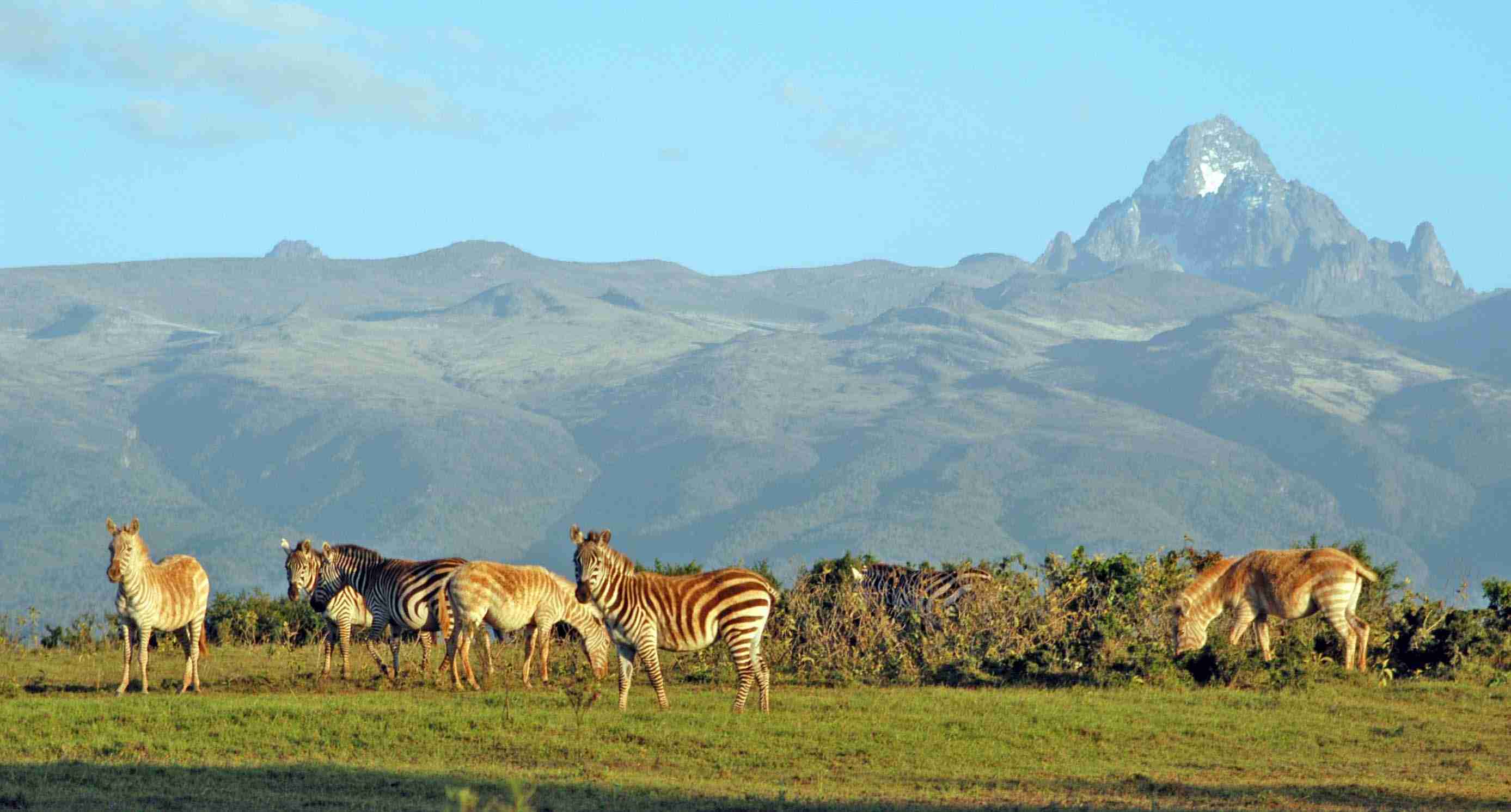Samburu National Reserve is a 165-square kilometer safari situated at the southeastern corner of Samburu District in the Rift Valley Province of Kenya. It is bordered to the south by Ewaso Nyiro River, which separates it from the Buffalo Springs National Reserve. Samburu National Reserve is one of the lesser-known national parks in Kenya, but is nevertheless teeming with life and is home to some of Africa’s rarest flora and fauna. The reserve’s topography is mainly open savannah with clusters of acacia trees, forest, thorn trees and grassland vegetation. The mountains Koitogor and Ololokwe are also visible in the reserve. This rugged and semi-desert park is a community-based wilderness that is preserved and operated by the resident Samburu communities under a centralized local council. It can be entered via the Ngare Mare and Buffalo Springs gates.
River
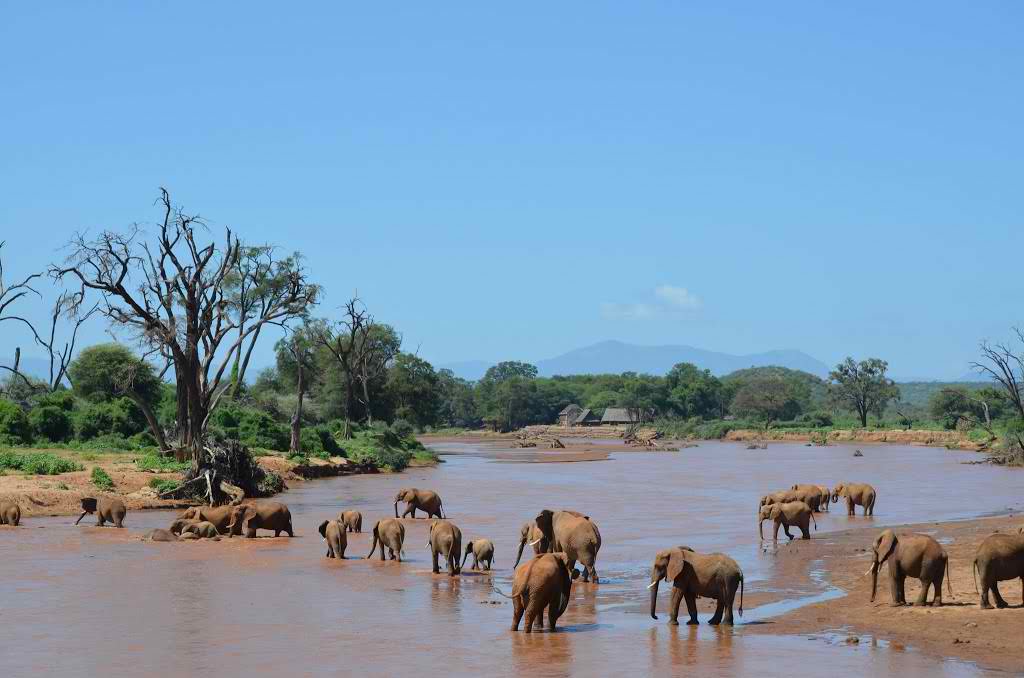
The Samburu National Reserve is located on the southern bank of the northern Ewaso Ngiro River, which is the primary source of water in the reserve. The river’s name is derived from the local community’s language which means “brown water”. Ewaso Ngiro River is considered as northern Kenya’s biggest and least seasonal river which draws a big population of Kenyan animals to the park. It has become a fundamental component to the survival of the wildlife, as well as the expansion of human population and socio-economic developments. The river has a continuous water supply due to the glaciers on Mount Kenya. It is 50–100m across, shallow and dotted with sandbars. Ewaso Ng’iro flows from the Kenyan highlands and empties into the famous Lorian Swamp.
Wildlife
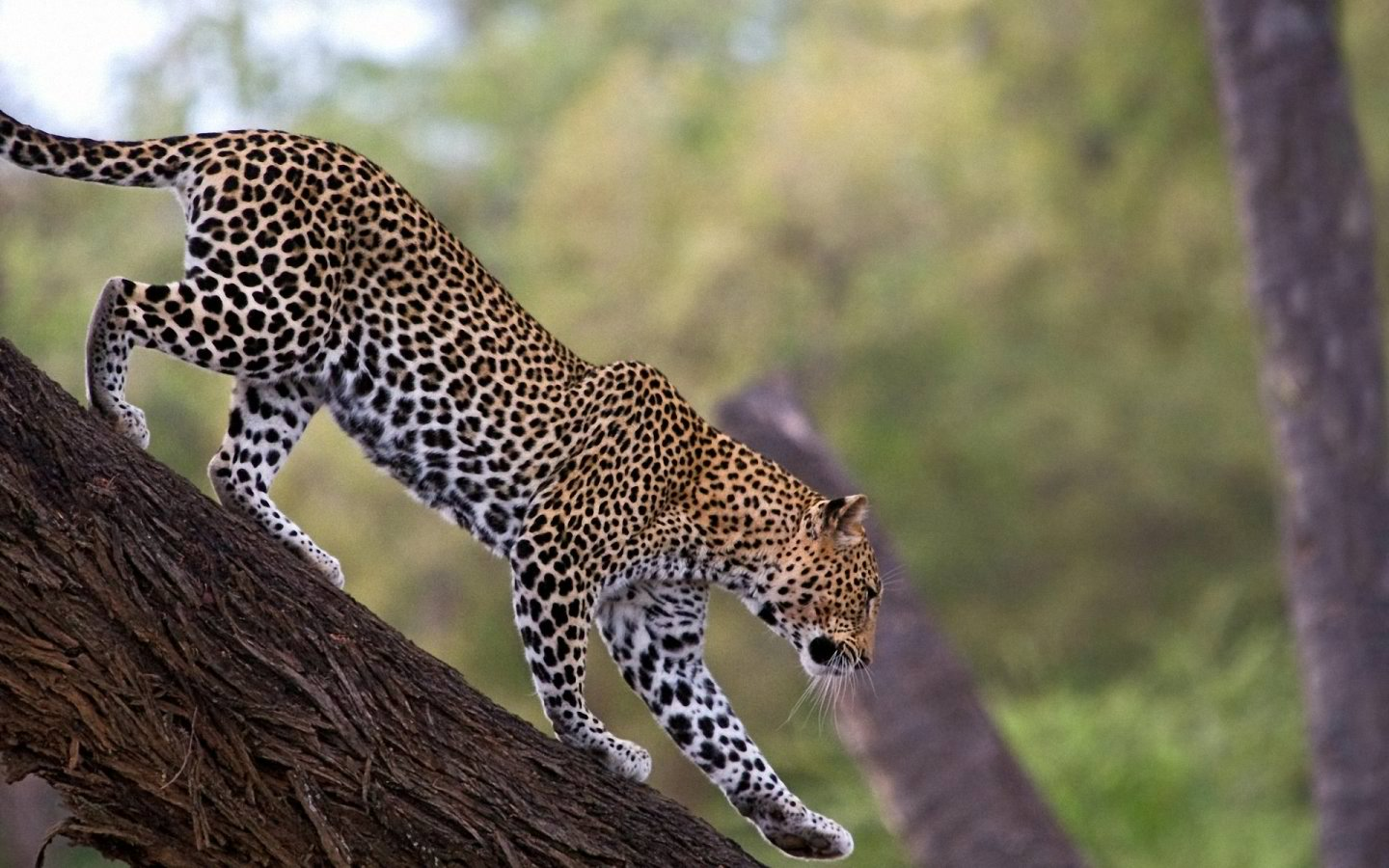
Samburu National Reserve is relatively small in size compared to other Kenyan parks like Masai Mara but it does not fall short of diverse wildlife. In fact, the second most visited game reserve in the country and is home to some of the most threatened species in Kenya. It is also renowned for its rare species of animals unique to the park known as the Samburu Special Five – Somali ostrich, grevy’s zebra, gerenuk, reticulated giraffe and beisa oryx. The dominant mammal of Samburu is the elephant with around 900 population which spend all or part of their year in the reserve ecosystem. Other common mammals are impalas, olive baboons, Grant’s gazelles, waterbucks, hippos, dik-diks, and warthogs. Lions, cheetahs, crocodiles, leopards, and African wild dogs are also common sightings in the reserve. Additionally, Samburu is also home to a large population of Nile crocodiles.
Aside from the numerous wildlife found in Samburu National Reserve, the safari is also a bird haven. Birdwatchers can expect to see hundreds of species on an average game drive. There are over 350 different species of birds identified in the reserve including hornbills, vultures, kingfishers, marabous, bateleurs, hornbills, guinea fowl, bee-eaters, Somali ostriches, woodpeckers and many others. There is also avifauna including birds of prey like the palm-nut vulture, Verreaux’s eagle-owl, Egyptian vulture, lappet-faced vulture.
Game Drives
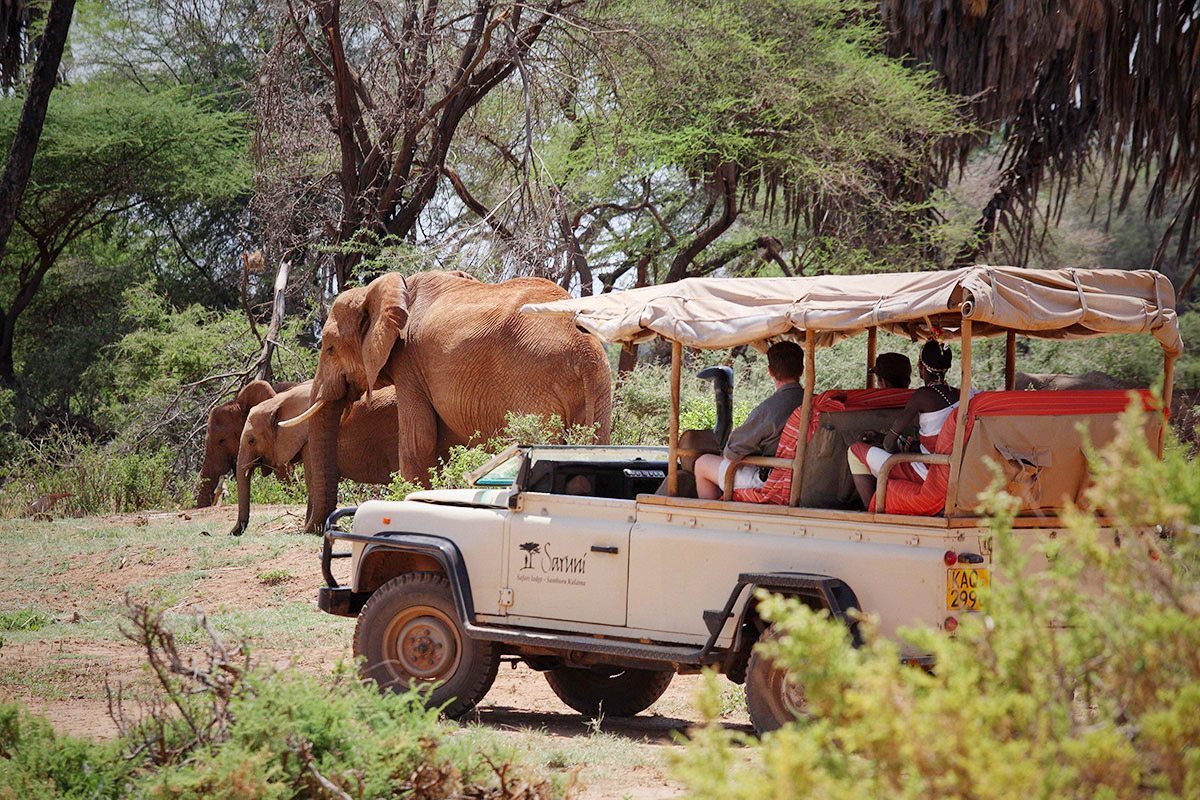
Samburu has become the preferred game reserve for tourists looking for a quieter safari with fewer game vehicles. Game drives often follow the winding, sandy tracks close to the meandering river, where almost anything can be seen from a herd of elephants drinking and bathing in the river to a pride of lions or to a flight of graceful leaping impala with the spectacular scenic background of rolling hills.
Samburu People
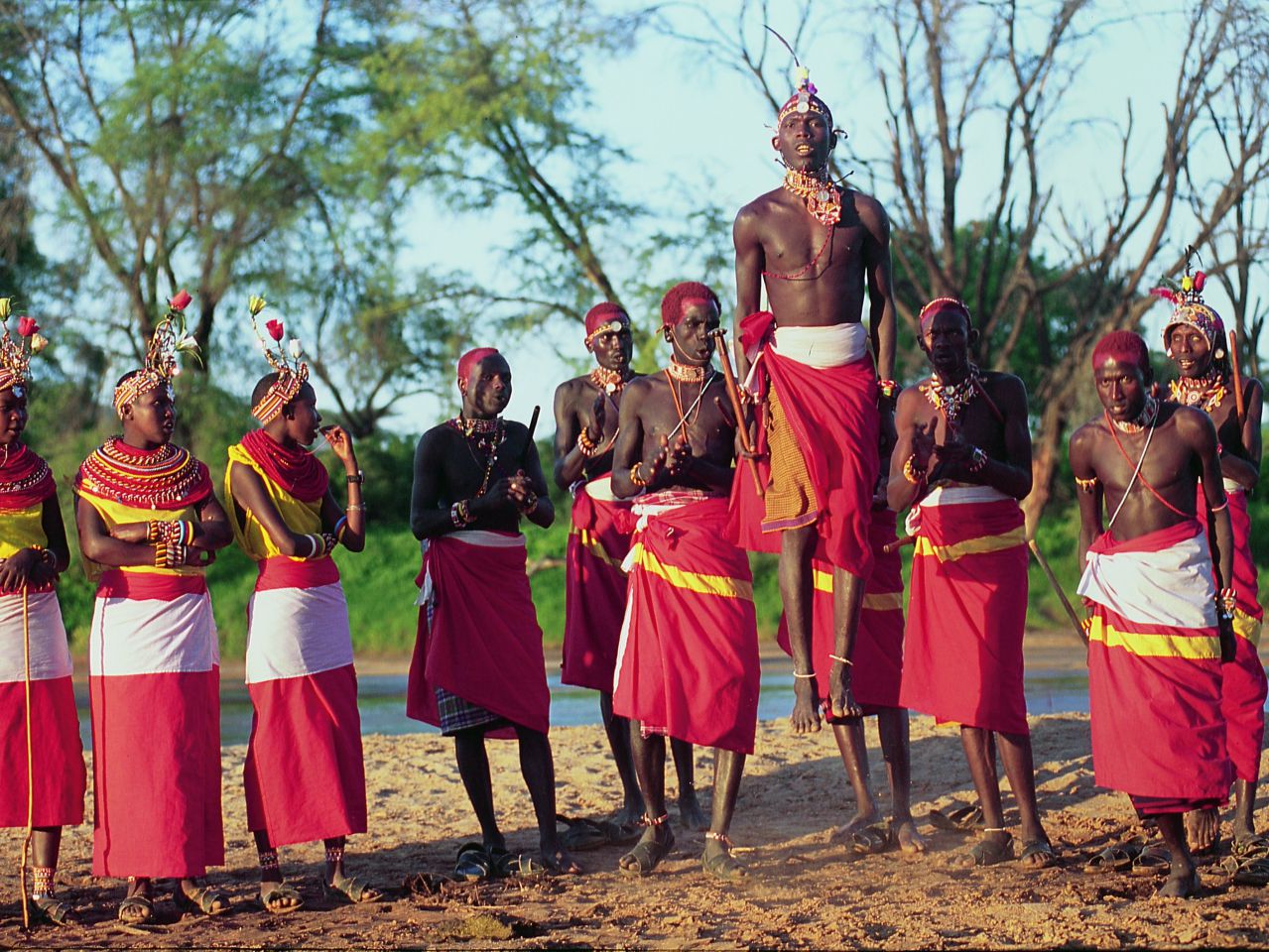
The Samburu people live on the outskirts of the reserve in rural villages that survive primarily off the land. The Samburu people are a tribe is known for their remote culture, pastoral and nomadic way of life. They are considered as semi-nomadic pastoralists who herd mainly cattle but also keep sheep, goats, and camels. Samburu people are closely related to the Maasai. They speak the same language, wear a similar traditional dress of blankets and beads, and maintain a very similar lifestyle. Visitors are encouraged to visit the local Samburu villages to get the chance of interacting with the community colorful Samburu people in their traditional setting and experience their culture. Visiting the local villages is also a good opportunity to purchase traditional Samburu souvenirs, art, and collectibles.
